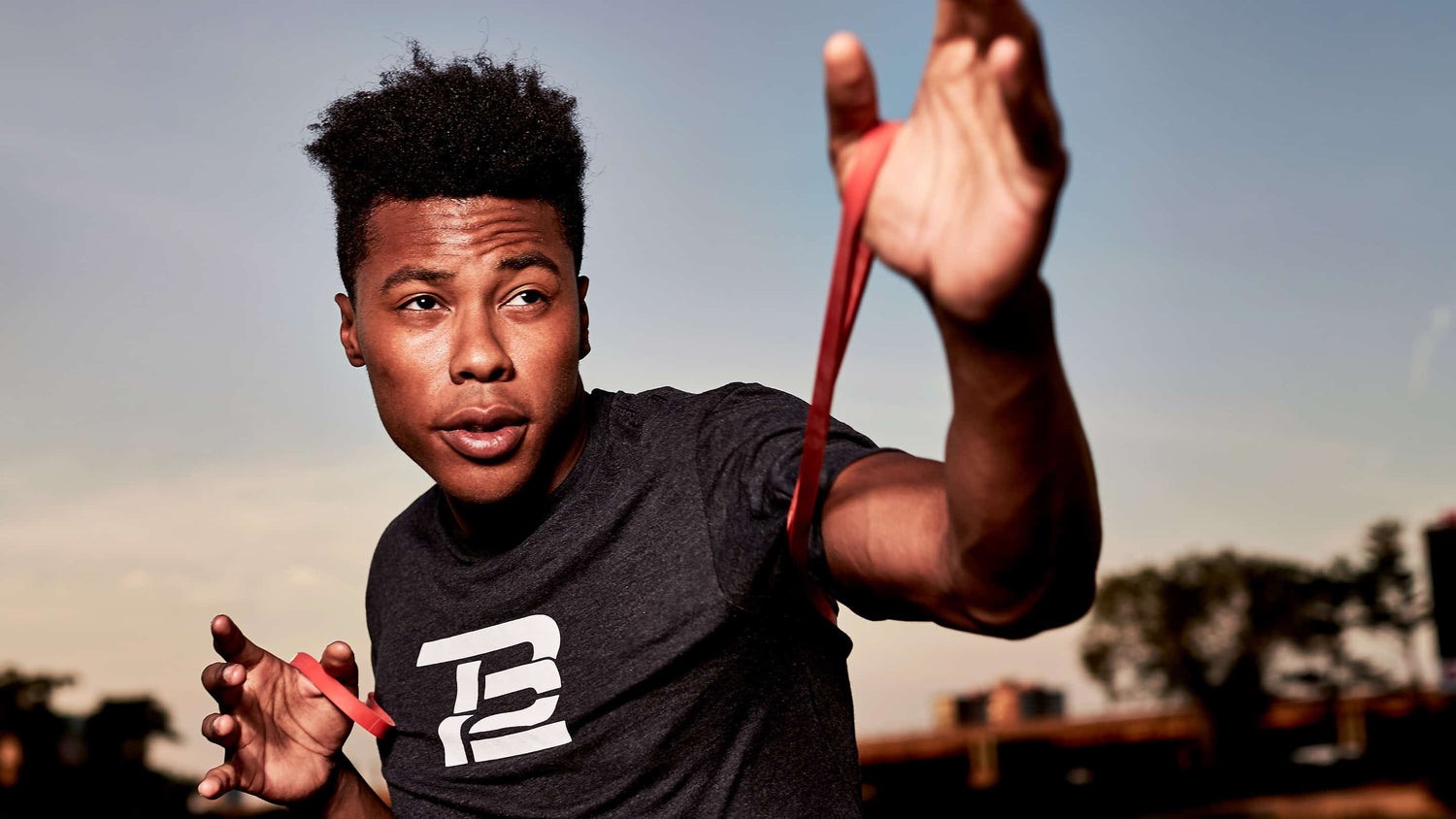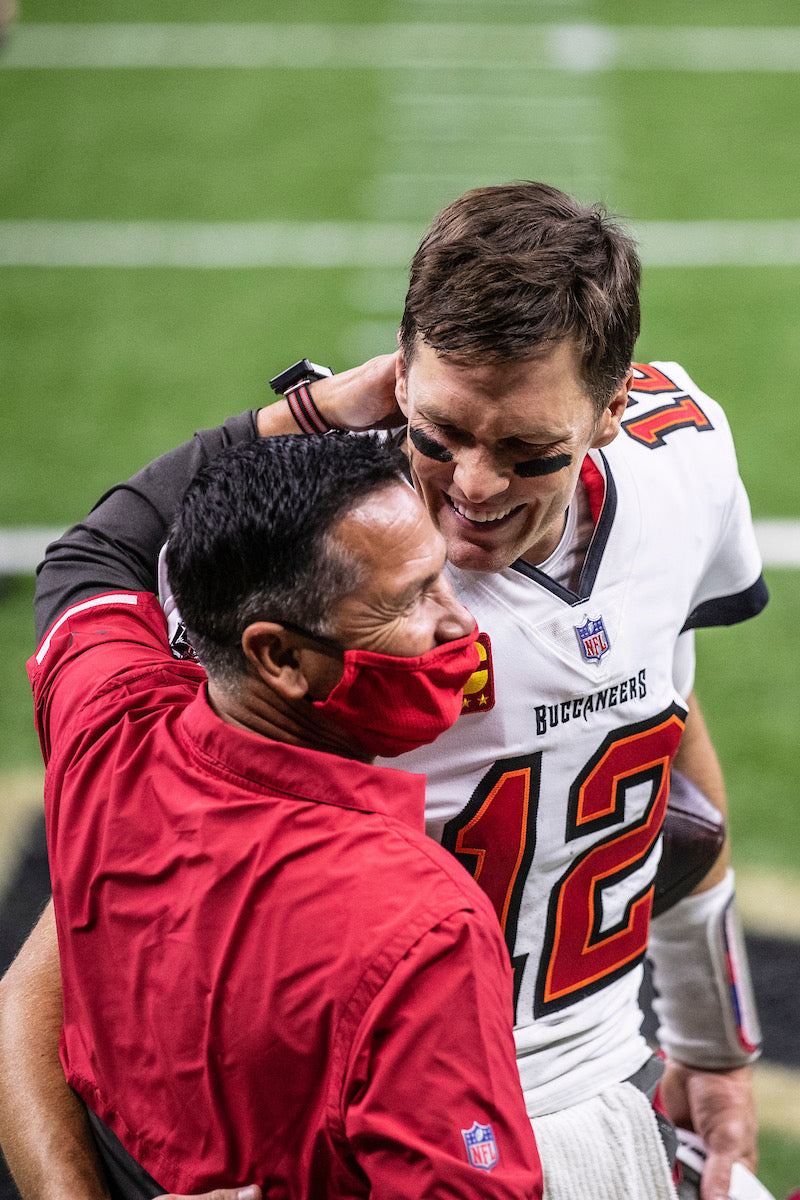You might’ve heard that Tom Brady primarily uses resistance bands in his approach to functional strength & conditioning.
“At TB12, around 90 percent of what we do —and I do — involves working out with resistance bands,” he says. “A lot of athletes [have] a fixed idea about how resistance bands work, and some even associate them with rehab. Many are surprised to find that resistance bands work their bodies functionally better than weights do in terms of resistance, versatility, and maximizing efficiency.”
We believe that pliability and functional training are the key tenets of a healthy, active lifestyle centered on performance and recovery. Pliability is the crucial missing leg that will complete and complement your workouts. Pliability combined with training that revolves around targeting muscle groups with exercises that mirror your body’s normal, functional movements are the keys to staying healthy over a long period of time.

Understanding the TB12 Approach
It’s crucial to train with movements that mimic the demands that your sport or activity puts on your body — both in what you’re doing and how fast (or slow) you’re doing it. Your workouts and training should prepare you for your sport or activity and allow you to train functionally in order to mimic the demands placed on your body.
Form is crucially important. When you’re focused on proper form, you’re only engaging the specific muscles you need for the movement you’re doing. In contrast, improper form develops when you get tired during a workout and your brain enlists the help of other muscles to help accomplish the task. Develop good habits in your training and you’ll keep your body healthy and continue to perform at your best.
We love training with resistance bands because they allowfor a big, fluid range of motion. They help build strength and power while keeping your muscles more supple and less dense than they would be if you used heavy weights. By targeting accelerating and decelerating muscle groups at the same
time without overload, bands can mirror your body’s normal, everyday functional movements.
Tom Brady’s Transition From Weights to Resistance Bands
Tom Brady lifted weights throughout college and into the early years of his NFL career. In his book, The TB12 Method, he tells the full story of how he realized traditional weight training was leaving him more sore than he wanted to be.
“Most of the time, my workouts left me hurting,” he wrote. “Sure, I was getting stronger, but I was a long way away from allocating the right proportion of my workout time to what could allow me to improve performance.”
Through his work with longtime Body Coach Alex Guerrero, co-founder of TB12, Tom began incorporating different tools and techniques. He has now been using resistance bands almost exclusively for more than seven years.
“The difference is profound,” he explains. “My muscles are more balanced and functional, especially for the movements I need to perform as an NFL quarterback. Resistance bands clearly work better for me.”
In addition to being portable and perfect for on-the-go workouts, here are three of the potent benefits resistance band workouts offer:
1. Resistance Bands Allow For Fluid Motion
Bands allow for a big, fluid range of motion. They help build strength and power while keeping your muscles more supple and less dense than they would be if you used heavy weights.
2. Resistance Bands Limit Inflammation
Bands can also help limit inflammation and overload. They condition you aerobically while complementing your pliability.
3. Resistance Bands Allow You To Mirror Everyday Movements
By targeting accelerating and decelerating muscle groups at the same time without overload, they also mirror your body’s normal, everyday functional movements. Together with pliability, they create a balanced approach to staying healthy over a long period of time.
How To Start Training the TB12 Way
If you’re accustomed to weight training and plan to transition to resistance bands, you may feel stuck. The transition to resistance bands can be a challenge if you’re not sure what to do with them, or if you already have a concrete routine involving weights. The following exercises are examples of how you can use resistance bands to improve your functional strength & conditioning.
1. Push-Ups
You can add a resistance band to a regular push-up for a more challenging exercise. This movement allows you to work against your body weight with some added resistance.
Get into a push-up position, paying close attention to your form. Put a looped band over your back and under your armpits, with each end under each of your palms. From here, without compromising form, do six or seven push-ups as explosively as possible.
2. Band Resisted Squats
To add bands to squats, you’ll need a long looped resistance band and a short looped band. Start with the short band, and place it above your knees. Step on your long looped band and bring the other end of it around your shoulders. From here, perform your squat, being sure to retain proper form.
3. Standing Double-Arm Rows
This is a basic exercise that normally involves weights. To perform this exercise with bands, you can use our TB12 Handle Resistance Bands attached to the portable anchor spine included in the kit.
Start by attaching a band at chest-height. Grab the handles and take a few steps back so the band has some tension. From here, face the anchor and get in your athletic position. Make sure to set your shoulders rather than shrug them. Retract your shoulder blades instead by trying to shove each shoulder blade into the opposite back pocket. Proper form is very important to productive workouts. Now that you’re in the right form, explosively pull both hands towards your body, bending your elbows to 90 degrees. Now, just repeat this movement.
Exercises using our TB12 Resistance Bands can be adapted to mimic almost any sport-specific movement, which allows for training at the speed of sport without the higher risk of overload and injury that are commonly associated with traditional methods of strength training. Used in tandem with pliability training, resistance bands create a balanced approach to working out that helps you strengthen your body while reducing the load on your muscles and joints.
You don’t need to be an expert to be an athlete
A resistance band training program might feel odd or too easy for someone who has primarily exercised with weights during their time in their sport. If that’s you, don’t let the feeling fool you. Your body needs to get accustomed to bearing resistance rather than load, which is the major difference between bands and weights.
Tom describes it like this: “Imagine your body is a pickup truck. It’s weighed down with a thousand pounds of bricks in its cargo bed. This is what weight lifting does to your muscles, ligaments, and joints. Now imagine your body as a pickup truck that’s towing a thousand pounds of bricks behind it. There’s minimal weight on your structure.”
Why put that excess load on your joints when you really don’t need to?
If you’re experienced with weights, switching to resistance bands doesn’t have to be difficult. Your favorite exercises, like deadlifts, chest presses, alternating rows, and squats, all have band-assisted variations that relieve the pressure on your body and allow your muscles to better maintain pliability.
Expert Tips for Effective Resistance Band Workouts
1. Keep an eye on your form —Throughout an entire exercise set, your knees should be over your feet, your hips should be over your knees, and your core should be engaged. Work out in front of a mirror, with a buddy who can give you feedback, or with your phone recording your movements. That way, you can note and adjust issues with your form.
2. Focus on core and glute stability — Focus on ground force production, or the ability to transfer energy from the ground, through the body, and into the function you’re performing. If you neglect to engage your core, you will not gain access to the full amount of strength and force available to you.
3. Set a timer for twenty seconds — That’s how long you should aim to do each resistance band training exercise. If your form starts to break down before the timer goes off, stop. “Over time,” Brady wrote, “as you build up endurance and increase proficiency, you’ll find yourself doing the exercise for the full twenty seconds.”
Want to dive deeper into the TB12 lifestyle? Download our free TB12 Explained Guide and start your journey today!







